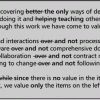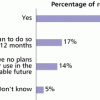Strategic advice to leverage new technologies
Technology is at the heart of nearly every enterprise, enabling new business models and strategies, and serving as the catalyst to industry convergence. Leveraging the right technology can improve business outcomes, providing intelligence and insights that help you make more informed and accurate decisions. From finding patterns in data through data science, to curating relevant insights with data analytics, to the predictive abilities and innumerable applications of AI, to solving challenging business problems with ML, NLP, and knowledge graphs, technology has brought decision-making to a more intelligent level. Keep pace with the technology trends, opportunities, applications, and real-world use cases that will move your organization closer to its transformation and business goals.
Recently Published
Part III of this series provides practical advice for launching a business-IT architecture misalignment initiative in practice. Topics covered include business as a change agent in business-IT transformation, building executive support, transformation scenarios, and establishing governance and funding.
User Experience Analysis
Welcome to the Dark Side
Since the publication of "CMMI for Development, Version 1.3," we would expect an end to the discussions about whether agile can be combined with CMMI. In its current version, CMMI explicitly adds guidance for organizations using agile methods. However, our experience reveals that practitioners still think CMMI and agile are incompatible because they lack accurate information about agile development.
In my last couple Advisors, I have looked at what constitutes architecture and an architectural description ("Is It Architecture?
Last week, in Part I of this Advisor, I discussed important changes I saw happening in the Hadoop/Big Data world in order to accelerate enterprise adoption of the technology (see "Big Changes on the Horizon for Big Data -- Part I").
In Reframing Frameworks: Part I -- Making EA Frameworks Your Ally, I identified eight key factors common to all predefined frameworks.















